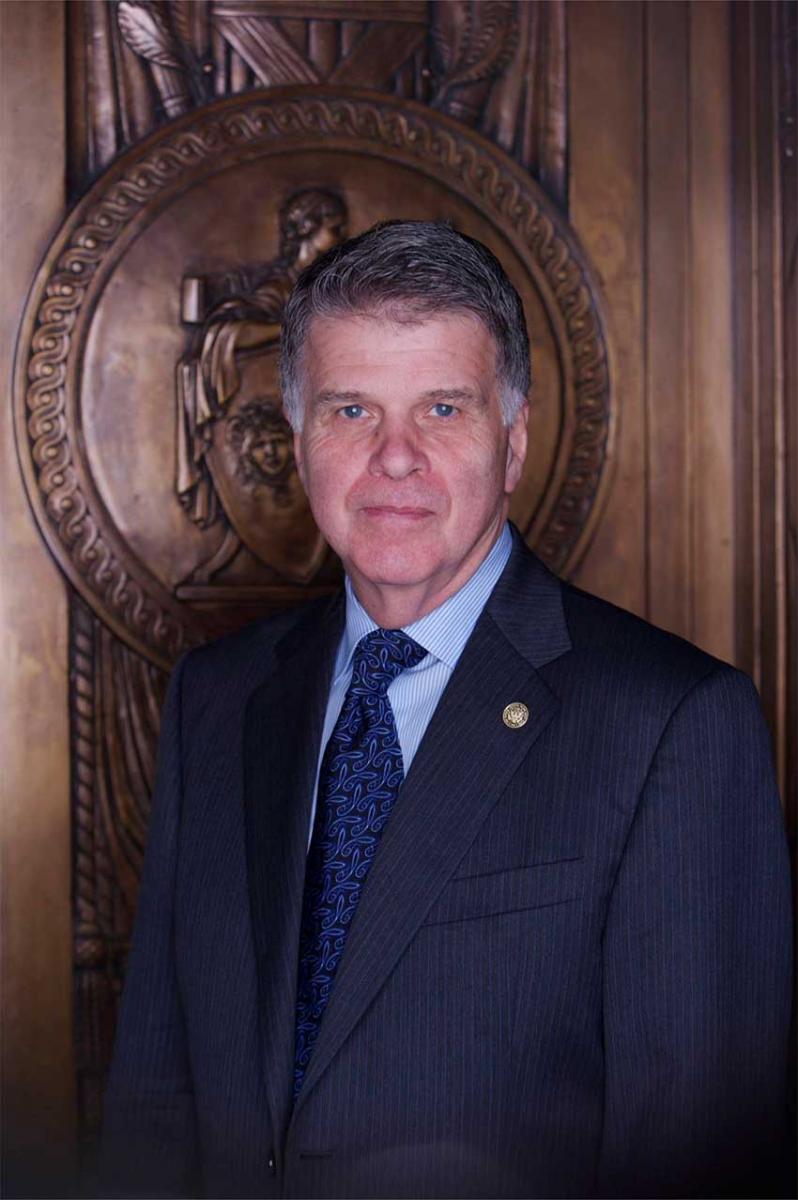
The State of the Constitution:Archivist's welcome for Guggenheim Tribute: Screening of Berga
Thursday, September 26, 2013 at 7 p.m. McGowan Theater, Archives I
Good evening. I'm David Ferriero, Archivist of the United States. Welcome to our Seventh Annual Charles Guggenheim Tribute Program in the William G. McGowan Theater at the National Archives in Washington, DC.
We began these tributes in 2007 with a screening and discussion of Charles's 1964 documentary Nine From Little Rock, a film for which he won his first Oscar. Thanks to a generous donation by Guggenheim Productions, Inc., we have that statuette on permanent display up in the theater lobby.
Tonight's program is part of our continuing partnership with the Charles Guggenheim Center for Documentary Film at the National Archives. The center was created in 2004 to honor the late documentary filmmaker, past President of the Foundation for the National Archives, and creator of the film we are remembering tonight.
Through public film screenings and discussions presented here in the theater (which Charles helped design), the Guggenheim Center not only acknowledges the contributions of a great American filmmaker, but is also a showcase for the motion picture holdings of the National Archives and the art of the documentary film.
Before we get to tonight's program, I'd like to tell you about two programs coming up here next month.
On Thursday, October 17, at 7 p.m., we'll host a program connected to our new exhibition—"Discovery and Recovery: Preserving Iraqi Jewish Heritage"—which opens on October 11. The exhibit details the recovery and preservation of historic materials discovered in 2003 in a flooded basement in Saddam Hussein's intelligence headquarters relating to the Jewish community in Iraq. Our Director of Preservation Programs will lead a panel discussion of the dramatic story behind the exhibit and the historic significance of the items saved.
A week later, on Wednesday, October 23, at 7 p.m., author Samuel G. Freedman will lead a discussion on "Breaking the Line: Sports as a Catalyst for Social Change." The panel will discuss the efforts of coaches and players at historically black colleges and universities in the 1960s to prove the intellectual acumen of African Americans at a time when the prevailing prejudice said that blacks were not smart enough to be successful at the game.
To learn more about these and all of our public programs and exhibits, consult our monthly Calendar of Events. There are copies in the lobby—along with a sign-up sheet so you can receive the Calendar by regular mail or email. You'll also find brochures about other National Archives programs and activities.
Another way to get more involved in the National Archives is to become a member of the Foundation for the National Archives. The Foundation supports the work of the agency, especially its education and outreach programs. You may pick up an application for membership in the lobby.
Tonight we remember Charles Guggenheim's last film, Berga: Soldiers of Another War, which first aired on PBS 10 years ago.
Completed just six weeks before he died in 2002, Berga is certainly Charles's most personal film, and for reasons we will shortly learn, he narrated it in the first person for the first and only time is his long and distinguished career.
I would like to acknowledge some special guests who are with us tonight:
- Marion Guggenheim and Grace Guggenheim, Charles's wife & daughter
- Mr. Lee Schlesinger, who joins us from New Orleans. He's not only a close friend of the Guggenheim family, but his support, both financially and creatively, provided Charles with the confidence and encouragement that allowed that allowed him to tell the story of not only his fellow American GIs, but of himself as well.
- And Janice Swack, the wife of Myron Swack, one of the Berga survivors interviewed for the film, is here tonight from New Jersey.
And now to tell us more about tonight's film and Charles's connection to the events they depict, we are pleased to welcome journalist and author Roger Cohen.
Roger covered the production of Berga for an article that appeared in the April 17, 2001, New York Times, and he is the author of a companion book, Soldiers and Slaves: American POWs Trapped by the Nazis' Final Gamble.
He joined the New York Times in 1990 and was a foreign correspondent for more than a decade before becoming acting foreign editor on September 11, 2001, and foreign editor six months later.
Since 2004, he has written a column for the Times-owned International Herald Tribune, first for the news pages and then, since 2007, for the op-ed page. In 2009 he was named a columnist of the New York Times.
Ladies and gentlemen, please welcome Roger Cohen.
 The Archivist of the United States is the head of our agency, appointed by the President of the United States.
The Archivist of the United States is the head of our agency, appointed by the President of the United States.